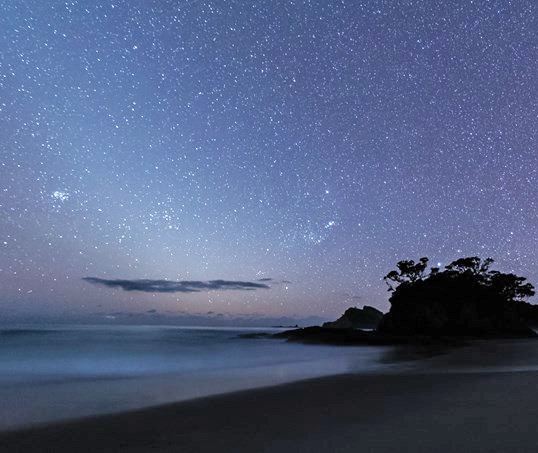Embrace the significance of Matariki and Puanga

Celebrations are getting underway to mark Matariki with numerous events planned around the Far North.
A range of festivities and events are planned to celebrate the Māori New Year and will continue through to late July. Highlights include a Matariki Puanga Night Ride in Kaikohe this Wednesday (26 June), a Matariki Remembrance Walk and Health Expo in Kawakawa the following day on Thursday, and a Hikoi to Whangatauatia on Saturday (29 June) for Matariki ki Ahipara.
Far North Libraries and Te Ahu Museum also have Matariki calendars packed with events. These include art and poetry competitions with hundreds of dollars in prizes up for grabs. Toi Pūrākau invites artists to produce works displaying the significance of Matariki Puanga. There are three age categories with prizes for children (5-10), teen (11-17) and adult (18 up) sections.
Toi Kupu Puanga Matariki Poetry Competition is open to all residents living in or who whakapapa to the Far North. The winning poem will receive $700, with $500 for second place and $150 for third.
Te Ahu Museum at Kaitāia is celebrating Matariki Puanga with several events through to the end of July. The Ngā Whetu Maumahara Remembrance Wall provides an opportunity to honour departed friends and whanau by writing a special message on a star to be hung in the atrium of Te Ahu.
For more information on Puanga Whakahī, Matariki Whakahā events go to Te Ahu Museum’s webpage here webpage or check your local library Facebook page. Links to individual library Facebook pages can found here.
Matariki is a star cluster commonly known as Pleiades, one of the earliest recorded star groups in history. It sets on the western horizon in the evenings near the beginning of winter and reappears again on the eastern horizon in mid-winter, just before sunrise. Its rising signals te Mātahi o te Tau – the Māori New Year. Matariki is a time for people to gather, reflect on the past, celebrate the present and plan for the future. However, Matariki isn’t always seen clearly in some parts of Aotearoa, particularly in western parts. For those areas, Puanga (Rigel) is the brightest star in the Orion constellation in northwestern skies about 10 to 14 days before Matariki rises in the northeast. Puanga isn’t celebrated over one or two days – it’s a period of about two months of preparation followed by two months of wānanga (learning).
These celestial celebrations happen at the coldest time of the year and, historically, it was a time when most work has come to an end; the harvest is over, and food has been gathered and stored in pits and pātaka for winter.
Other events taking place across the Far North include:
- Matariki Pēwhairangi Festival. 21 June - 14 July. Multiple locations across the Bay of Islands.
- Kororāreka Matariki Art Exhibition. 6 July - 21 July, Russell. An event celebrating Kororāreka Creatives.
- Matariki Remembrance Walk and Health Expo. 27 June, Kawakawa.
- Matariki Puanga Night Ride. 26 June, Kaikohe
- Matariki ki Ahipara. 28-30 June, Ahipara
- Matariki Gala, 27 June, 2pm-6pm. Bay of Islands College.

